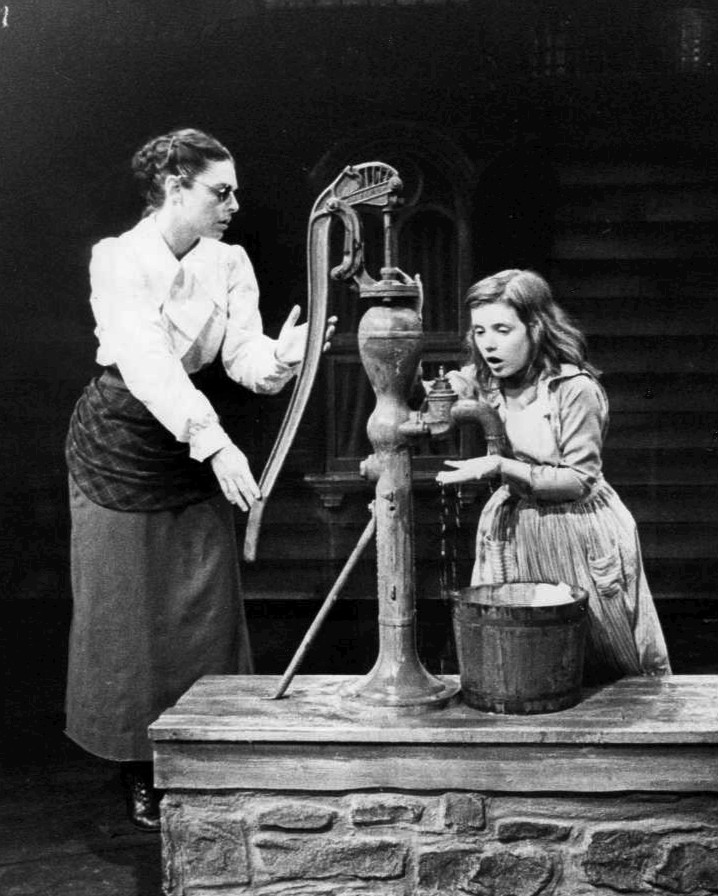"As Helen, little Miss Duke is altogether superb, a plain, sullen, explosive, miniature monster whose destructive behavior makes sympathy for her afflictions impossible, but whose independence and vitality are nevertheless admirable." (New York Times review of The Miracle Worker at http://graphics8.nytimes.com/packages/pdf/theater/Miracle-Worker.pdf)
On October 19, 1959, William Gibson's play The Miracle Worker premiered at the Playhouse Theatre on Broadway. Based on The Story of My Life, by Helen Keller, the play ran for almost two years, closing on July 1, 1961.
Tuscumbia, Alabama native Helen Keller went deaf and blind at 18 months of age when she was afflicted with Scarlet Fever. Her parents felt such pity for her that they overindulged her and by six years old, she was a "wild, angry, tantrum-throwing" little girl en.wikipedia.org/wiki/The_Miracle_Worker_(play).
Desperate to get their little girl back, the Keller's called on the Perkins Institute to help their child. Alexander Graham Bell, who worked with the deaf, recommended a woman named Annie Sullivan. Miss Sullivan agreed to work with Helen and, thanks to her consistency and perseverance, performed a "miracle" in the life of little Helen, teaching her how to communicate.
Helen Keller's autobiography, The Story of My Life, was based on her years with her beloved teacher. She dedicated it to Alexander Graham Bell. For more information on the relationship between the two, read my post http://alinefromlinda.blogspot.ca/2013/08/helen-annie-alec.html.
The Broadway play starred Anne Bancroft as Anne Sullivan, Patty Duke as Helen Keller, Torin Thatcher as Captain Keller and Patricia Neal as Kate Keller. The production won five Tony Awards and ran for 719 performances. The movie version, which premiered in 1962, starred much of the same cast.

No comments:
Post a Comment